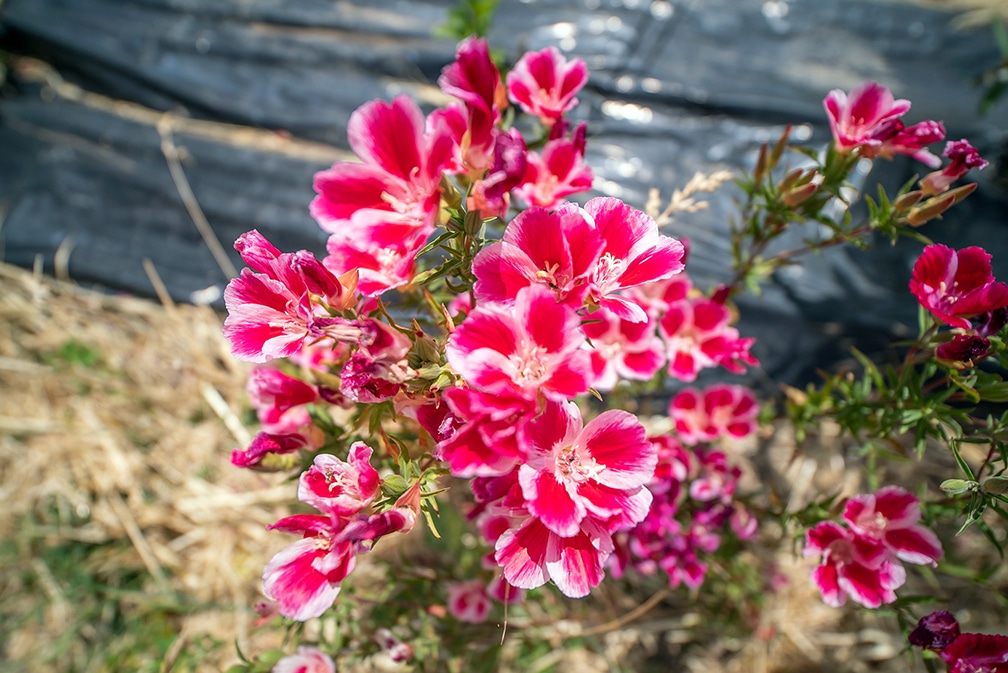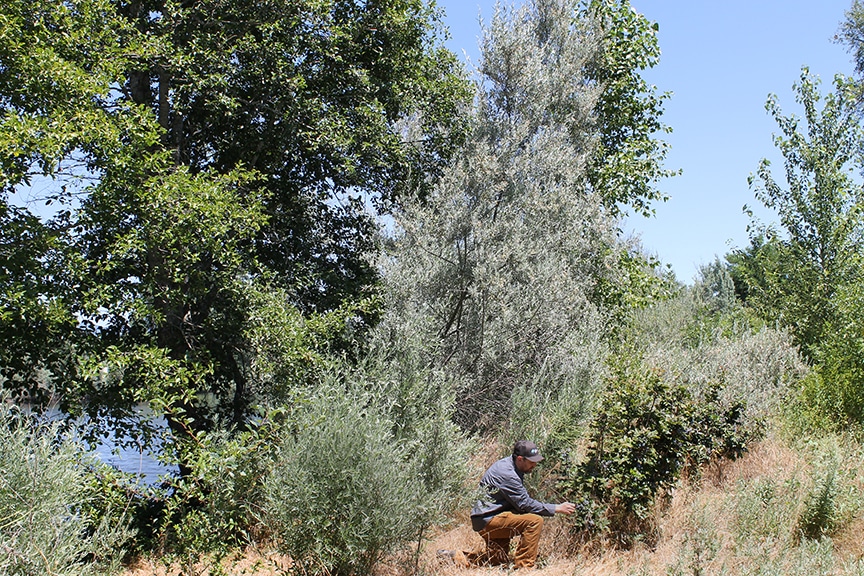Spotlight on Strauss Ecological Services, adding native plants in Southern Oregon
July 19, 2022
Collaboration is critical, because achieving our mission is impossible without it. Partnerships with small businesses are a core part of our strategic work to preserve and restore freshwater ecosystems with speed and scale.
The Freshwater Trust (TFT) is proud to have local contractors like Strauss Ecological Services (SES) as partners in our effort to improve the Rogue. We had the opportunity to sit down with Kyle Strauss to discuss how he and his team lead on the installation and maintenance of collaborative planting projects, and removal of invasive species, throughout the basin.
Can you share in a few words what your company does?
Strauss Ecological Services is a small business that specializes in habitat restoration and noxious weed control. I also like to share my love of nature through photography.
When I’m trying to explain what I do to someone who doesn’t fully understand what “habitat restoration” means, I tell them I remove invasive weeds that don’t belong here throughout the spring summer and fall, and plant native trees and shrubs in the winter to improve the local environment.
How did you get into this profession?
I got a taste of helping restore habitat through weed pulling in an AmeriCorps program, and then volunteered with The Nature Conservancy of Oregon in 2001, which turned into a full-time, paid position. Being a steward for nature preserves allowed me to learn many skills I still utilize today. When the program I ran for The Nature Conservancy ended, I started Strauss Ecological Services in 2013. I’ve been hired to help with many habitat restoration projects throughout Southern Oregon from a variety of clients including private landowners, watershed councils and nonprofits, as well as agencies and municipalities.

Native shrubs and wildflowers, such as the Clarkia or “Farewell to Spring” shown above, provide flowers for pollinators and berries that become food for wildlife. All native plants added to restoration sites help to develop a dense, healthy, multi-story forest.
How did you first start working with TFT?
I founded Strauss Ecological Services in 2013, which was right after TFT started many of their Medford water quality trading projects. I was hired to help manage some of the plantings and then hired to maintain weeds at a number of the sites. I’ve helped with controlling weeds, adding tree protection, and installing more native plants at many of their sites throughout the Rogue basin.
What’s your favorite project that you’ve worked on with TFT and why?
Probably the Rogue 95 project. It’s near the confluence of the Rogue and Applegate rivers, which is a place I spend a lot of time around. I was involved in the very beginning of the project and helped plant some of the trees and shrubs there. I’ve been doing maintenance on the weeds ever since, so I’ve gotten the chance to see the place grow up and it’s been a remarkable transformation from a shoreline choked with blackberry brambles to a young, growing riparian forest with a diverse array of native species.

Kyle Strauss monitors the health of native trees at a fully established revegetation site along the Rogue River. The early stages of a riparian revegetation project are crucial to establishing a healthy riparian forest. Riparian revegetation sites are considered “established” when they can support native trees and shrubs that are healthy, taller than undesirable competing vegetation, are well distributed within the planting area, and are expected to continue to be vigorous into the future.
Tell me about a few goals of your business for the next years.
I have a lot of great clients that hire me to work in some really cool places around Southern Oregon. I hope to keep working at these places as it’s enjoyable to see the progress on the ground. Field work can be physically taxing though, so I hope to add some employees over the next few years to help with the workload.
Why do you like working with TFT?
I enjoy working on TFT projects (23 and counting!) because they are improving habitat along creeks and rivers in places I love. I appreciate that they not only grow trees in their planting projects to put more shade onto waterways, but they also make sure to include a component of native shrubs and forbs to ensure a diversity of flora get established at these sites. That diversity of native vegetation lends itself to bringing back an array of wildlife into these areas. I’ve set up trail cams at some of these sites and observed a variety of warblers and other songbirds using the underbrush, beavers and otters coming into the sites via the waterways, and foxes, black bears, deer, elk, and even cougar coming through.
TFT has been a consistent client for my company, and has been a pleasure to work with over the years.
#native plants #riparian restoration #Rogue River
